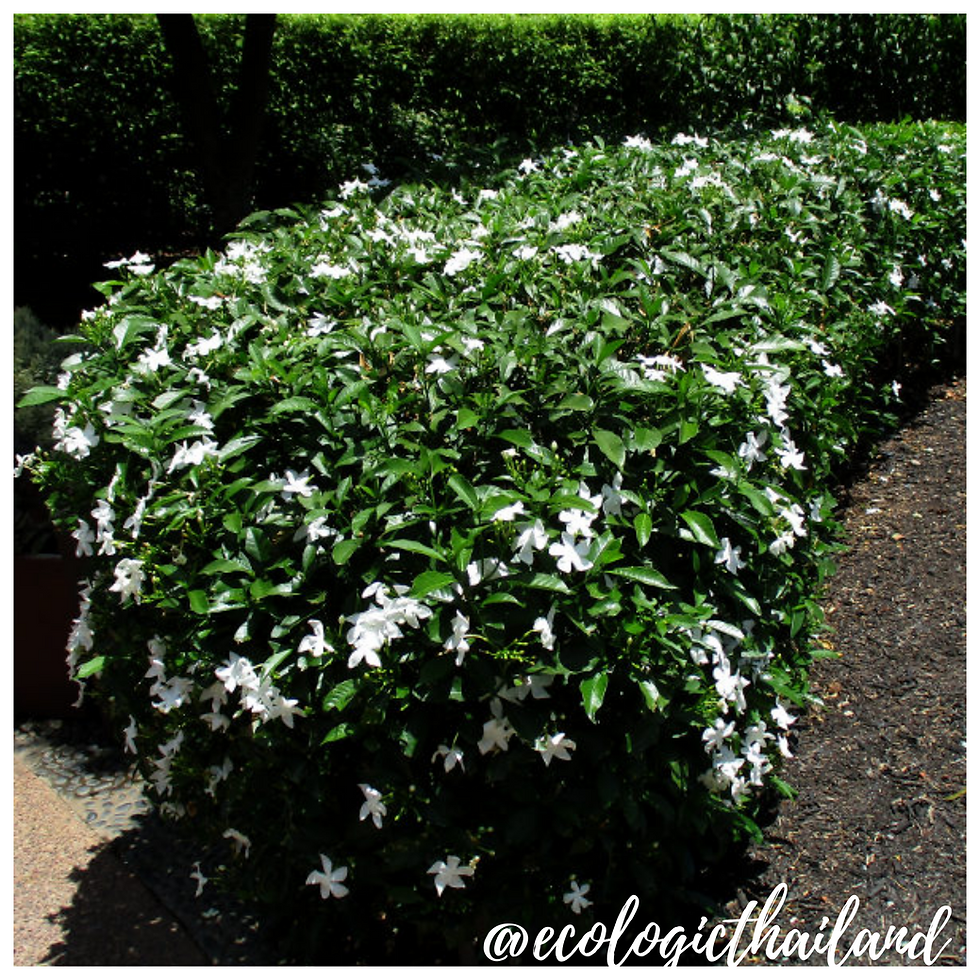Hummingbird tree, aka Sesbania
- Eco-Logic Resort
- Oct 28, 2020
- 3 min read
Dok khae| ดอกแค | Sesbania Grandiflora
Family: Fabaceae - Genus: Sesbania

You can find this tree near the restaurant of Eco-Logic and close to the school of the Thai Child Development Foundation. The trees are always in areas with full sun.
Sesabania ia a tree, a fast-growing tree. The leaves are regular and rounded and the flowers white, red or pink. The fruits look like flat, long, thin green beans. The tree thrives under full exposure to sunshine. The flowers are edible.
The tree blooms all year.

THE TREE
It is a fast-growing tree. The leaves are regular and rounded and the flowers white, red or pink.
It is a small soft wooded tree up to 3–8 meter tall.

LEAVES
Leaves are 15–30 centimeter long, with leaflets in 10–20 pairs or more and an odd one.
The leaves are edible and can be used as a vegetable in a stir fry.

FLOWERS
The flowers are eaten as a vegetable in Thailand both cooked in curries, and raw, blanched or as a tempura like dish.
Flower clusters hanging at leaf base have 2-5 large flowers; pink, red or white,, 5-10 centimeter in length, curved, about 3 cm wide before opening.

FRUIT/SEED PODS
The fruits look like flat, long, thin green beans, and can also be eaten when young. The pods are long and narrow, hanging down 30-50 centimeter by 8 mm; septate, wide, flat, with swollen margins and about 15-40 pale-colored seeds; seed is beanlike, elliptical, red brown, 6-8 in a pod, 3.5 mm.
CULINARY USES OF SESBANIA GRANDIFLORA
The flowers, seedpods, young leaves and shoots can be consumed raw or cooked. The seeds can be fermented into tempeh.
The bark yields a clear gum used in foods and as substitute to gum arabic.
Flowers can be eaten raw or cooked. They can be added to salads, boiled, fried or used in curries. Rich in sugar and iron, with a flavor like mushrooms. The center part of the flower is usually removed because it is very bitter. White flowers are generally preferred to red ones.
Seedpods can be eaten- raw or cooked. The long, narrow pods are boiled and eaten like string beans. The very young seedpods can be added to salads.
Seed. The protein rich seeds are fermented into tempeh.
Young leaves and shoots can be eaten raw or cooked. Added to salads, cooked or added to stews.
NUTRITION
The leaves contain:
water, protein, fat, NFE, fiber, ash, Ca, P, Fe, vitamin A, thiamine, riboflavin, niacin, and ascorbic acid.
The flowers contain:
protein, fat, carbohydrate, fiber, ash, Ca, P, Fe, Na, K, b-carotene equivalent, thiamine, riboflavin, niacin, and ascorbic acid.
Seeds contain :
CP, fat, total carbohydrate, and ash.
TRADITIONAL MEDICINAL USE OF SESBANIA GRANDIFLORA
NOTE: please take advice from a doctor if you are planning to use herbal medicine.
Sesbania also has medicinal uses. It is used for sprains, bruises, swellings, rheumatism, itching, diarrhea, colic, dysentery, diabetes, fever, sinus congestion, and malaria. Further, it is said to have the capability to fix atmospheric nitrogen and can be used as green manure to improve soil conditions.
INTO THE WILD: a down to earth experience

For guests and visitors to Paksong we organize weekly tours "The Edible Forest" and Foraging weekends: Into the Wild. We work with local guides to take you in the jungle of Paksong. After foraging, we will cook a meal with the ingredients, using bamboo together with you!
Come and join and learn about the abundance of food that nature gives us!
INTO THE WILD!


















Comments